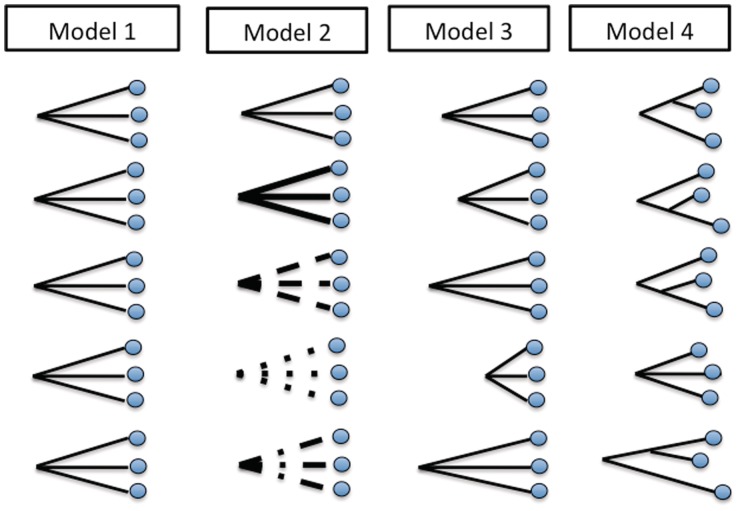Fig. 2.
Model diagrams. The four models differ in the assumptions they make about the nature of the evolutionary processes (depicted by line type) and the divergence time between the compared sequences (depicted by line length). Model 1 assumes point mutation and conversion are governed by the same parameters on all gene pairs, and each pair within a triplet shares the same “age” with other pairs. Model 2 assumes distinct triplet-specific probabilities of genetic processes, and it allows for triplet-specific conversion length distribution and conversion mismatch density. Model 3 assumes the processes occur universally at equal rates across triplets, including conversion length distribution and mismatch density; however, the divergence time of each triplet may be different. Model 4 assumes equal process rates across gene pairs, but it allows for within-triplet variation in divergence time.

